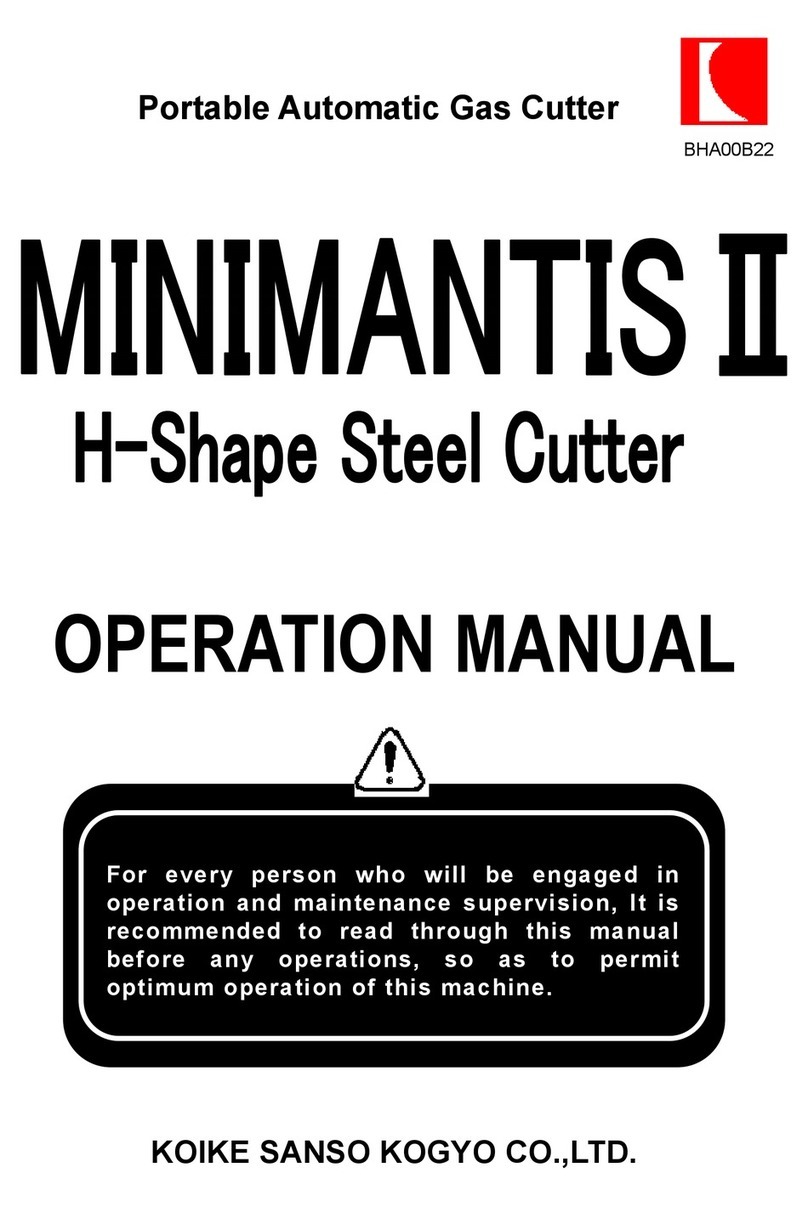
PICLE1-
Ⅱ
- 4 -
1.2.3 High Pressure gas cylinder safety precautions
1. Never use broken cylinders or cylinders from which gas are leaking.
2. Install cylinders upright and take measures to prevent them from falling.
3. Use cylinders only for specified purposes.
4. Do not smear container valves with oil or grease.
5. Install cylinders in a place free from heat, sparks, slag, and open flame.
6. Contact the distributor if the container valves will not open.
Never use a hammer, wrench, or other tools to forcibly open container valves.
1.2.4 Safety precautions for hoses
1. Use the oxygen hose for oxygen gas only.
2. Replace cracked hoses or other hoses damaged by sparks, heat, unshielded fire, etc.
3. Install hoses without twisting.
4. To prevent breakage of hoses, take great care during operation and transportation.
5. Do not hold the hoses when moving the machine.
6. Periodically check the hoses for damage, leakage, fatigue, loose joints, etc, to ensure safety.
7. Cut hoses to the minimum possible length. Short hoses reduce hose damage and pressure drop, as
well as reduce the flow resistance.
1.2.5 Safety precautions for fire
Take safety precautions to prevent fire prior to gas cutting.
Ignoring hot metal, sparks, and slag could cause a fire.
1. Keep a fire extinguisher, fire extinguish sand, bucket full of water, etc. ready on the site where gas
cutting is performed.
2. Keep flammables away from the cutting area to avoid exposure to sparks.
3. Always cool down steel plates that have become hot after cutting, as well as hot cut parts or scrap,
before bringing them close to flammables.
4. Never cut containers to which flammable materials are stuck.
1.2.6 Safety precautions for skin burns
Observe the safety precautions to prevent skin burns. Ignoring heat, spatter, and sparks during
operation could cause a fire or burned skin.
1. Do not perform cutting near flammables. (Move flammables well away from the sparks.)
2. Do not cut containers filled with flammables.
3. Do not keep lighters, matches, and other flammables nearby.
4. Flames from the torch will burn the skin. Keep your body away from the torch and tip, and check
the safety before operating the switches and valves.
5. Wear the correct protectors to protect your eyes and body.
6. Correctly tighten the tip to prevent backfire.
●
When fixing a tip to the torch, tighten the nut with the two wrenches attached.
●
If the tip is tightened excessively, it will be heated during cutting and tightened still more, making it
difficult to remove the tip.
●
Avoid damaging the taper of the tip since this may cause backfire.
































